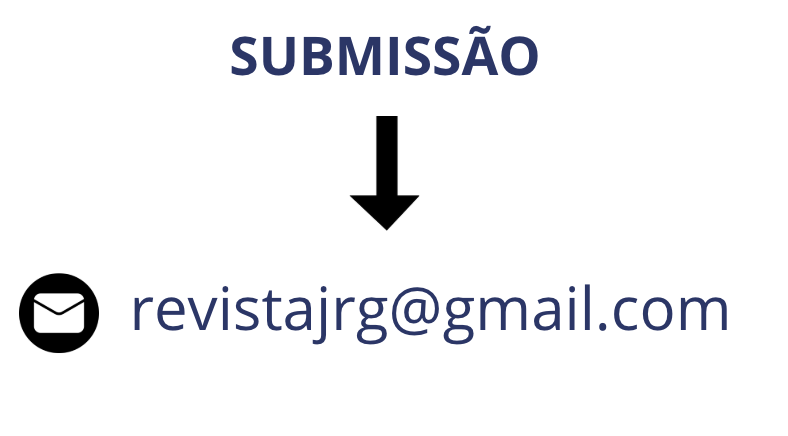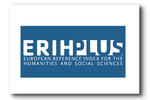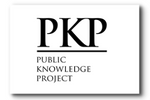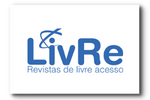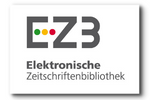Benefits of simulations for skill training in anesthesiology residency: a systematic review
DOI:
https://doi.org/10.55892/jrg.v8i18.2016Keywords:
Learning curve, Simulation Training, Professional Competence, Anesthesiology, Education, MedicalAbstract
Introduction: Medical training requires the integration of theoretical knowledge and practical skills to prepare anesthesiology residents to handle the clinical challenges of the specialty. In this context, the use of simulations has proven to be essential, allowing the development of both technical and non-technical competencies in a controlled and safe environment. Objective: Identify and synthesize evidence on the benefits of using simulations for skills training in anesthesiology residency. Method: A literature review was conducted following PRISMA guidelines, analyzing studies from 2019 to 2024 in the PubMed and LILACS databases. The review focused on types of simulations, skills developed, and clinical impact. Results: Thirteen studies, published between 2020 and 2024, were selected, which highlighted benefits such as greater accuracy in ultrasound-guided procedures, effective crisis management and improved patient safety. Technologies such as virtual reality and artificial intelligence were described as tools capable of accelerating the learning curve and enhancing educational experience. Despite these advancements, the implementation of simulation-based environments faces significant challenges. The high cost of equipment, the need for advanced infrastructure, and the lack of standardized methodologies hinder widespread adoption. In resource-limited regions, these barriers are even more pronounced. Suggested strategies include the use of cost-effective models, structured feedback, remote training programs, periodic session repetition, and the integration of simulations into medical curricula. Conclusion: Simulations are essential in anesthesiology training, enhancing technical skills and patient safety. Despite cost and logistical challenges, strategies such as accessible technologies and structured feedback can improve their effectiveness and broaden their reach.
Downloads
References
ABILDGREN, L. et al. The effectiveness of improving healthcare teams’ human factor skills using simulation-based training: a systematic review. Advances in Simulation, [s. l.], v. 7, n. 1, p. 12, 2022. Disponível em: https://advancesinsimulation.biomedcentral.com/articles/10.1186/s41077-022-00207-2. Acesso em: 7 abr. 2025.
BELFOR, J. A. et al. Competências pedagógicas docentes sob a percepção de alunos de medicina de universidade da Amazônia brasileira. Ciência & Saúde Coletiva, [s. l.], v. 23, n. 1, p. 73–82, 2018. Disponível em: http://www.scielo.br/scielo.php?script=sci_arttext&pid=S1413-81232018000100073&lng=pt&tlng=pt. Acesso em: 7 abr. 2025.
BHAGWAT, M. Simulation and anaesthesia. Indian Journal of Anaesthesia, [s. l.], v. 56, n. 1, p. 14–20, 2012. Disponível em: https://www.ncbi.nlm.nih.gov/pmc/articles/PMC3327064/. Acesso em: 7 abr. 2025.
BIELKA, K. et al. Difficult airway simulation-based training for anaesthesiologists: efficacy and skills retention within six months. BMC Anesthesiology, [s. l.], v. 24, n. 1, p. 44, 2024. Disponível em: https://doi.org/10.1186/s12871-024-02423-x. Acesso em: 7 abr. 2025.
BRASIL. Ministério da Saúde. Resolução CNE/CES no 3, de 20 de junho de 2014. Brasília, 2014. Disponível em: https://www.gov.br/saude/pt-br/acesso-a-informacao/acoes-e-programas/pnsp/legislacao/resolucoes/rces003_14.pdf/view. Acesso em: 7 abr. 2025.
BRASIL. Ministério da Educação. Resolução CNRM no 11, de 8 de abril de 2019. Diretrizes Curriculares Nacionais dos Programas de Residência Médica em Anestesiologia, Brasília, 2019. Disponível em: http://portal.mec.gov.br/index.php?option=com_docman&view=download&alias=111551-11-resolucao-n-11-de-8-de-abril-de-2019-anestesiologia&category_slug=abril-2019-pdf&Itemid=30192. Acesso em: 26 jan. 2025.
CHARONDO, L. B. et al. Confronting new challenges: Faculty perceptions of gaps in current laparoscopic curricula in a changing training landscape. Surgery Open Science, [s. l.], v. 16, p. 1–7, 2023. Disponível em: https://www.ncbi.nlm.nih.gov/pmc/articles/PMC10507640/. Acesso em: 7 abr. 2025.
CORVETTO, M. A. et al. Simulation-Based Training Program for Peripherally Inserted Central Catheter Placement: Randomized Comparative Study of in-Person Training With Synchronous Feedback Versus Distance Training With Asynchronous Feedback. Simulation in Healthcare: The Journal of the Society for Simulation in Healthcare, [s. l.], v. 19, n. 6, p. 373–378, 2024. Disponível em: https://journals.lww.com/10.1097/SIH.0000000000000805. Acesso em: 7 abr. 2025.
ELENDU, C. et al. The impact of simulation-based training in medical education: A review. Medicine, [s. l.], v. 103, n. 27, p. e38813, 2024. Disponível em: https://www.ncbi.nlm.nih.gov/pmc/articles/PMC11224887/. Acesso em: 7 abr. 2025.
GATES, R. S. et al. The Demands of Surgery Residency: More Than Just Duty Hours?. Journal of Surgical Research, [s. l.], v. 290, p. 293–303, 2023. Disponível em: https://linkinghub.elsevier.com/retrieve/pii/S0022480423002111. Acesso em: 7 abr. 2025.
GUTIÉRREZ-PERDOMO, V.; TEJADA-PERDOMO, J. H.; RAMOS-CASTANEDA, J. A. Airway management education and retraining: an unresolved paradigm. BMC Anesthesiology, [s. l.], v. 24, n. 1, p. 336, 2024. Disponível em: https://doi.org/10.1186/s12871-024-02637-z. Acesso em: 7 abr. 2025.
JENSEN, R. D. et al. Identifying technical skills and clinical procedures in surgery for a simulation-based curriculum: a national general needs assessment. Surgical Endoscopy, [s. l.], v. 36, n. 1, p. 47–56, 2022. Disponível em: https://link.springer.com/10.1007/s00464-020-08235-7. Acesso em: 7 abr. 2025.
LORELLO, G. R. et al. Simulation-based training in anaesthesiology: a systematic review and meta-analysis. British Journal of Anaesthesia, [s. l.], v. 112, n. 2, p. 231–245, 2014. Disponível em: https://linkinghub.elsevier.com/retrieve/pii/S0007091217319128. Acesso em: 7 abr. 2025.
MIYATA, H. et al. Validity assessment of the laparoscopic radical nephrectomy module of the LapVision virtual reality simulator. Surgery Open Science, [s. l.], v. 2, n. 1, p. 51–56, 2019. Disponível em: https://www.ncbi.nlm.nih.gov/pmc/articles/PMC8083013/. Acesso em: 7 abr. 2025.
MOHER, D. et al. Preferred Reporting Items for Systematic Reviews and Meta-Analyses: The PRISMA Statement. PLoS Medicine, [s. l.], v. 6, n. 7, p. e1000097, 2009. Disponível em: https://dx.plos.org/10.1371/journal.pmed.1000097. Acesso em: 7 abr. 2025.
MORRIS, O. D. et al. A Simulation-Based Training Program in Rapid Sequence Induction for Novice Anesthesiology Trainees Using a Novel Checklist. The Journal of Education in Perioperative Medicine : JEPM, [s. l.], v. 24, n. 4, p. E695, 2022. Disponível em: https://www.ncbi.nlm.nih.gov/pmc/articles/PMC9753963/. Acesso em: 7 abr. 2025.
MOSSENSON, A. I. et al. A competency framework for simulation facilitation in low‐resource settings: a modified Delphi study. Anaesthesia, [s. l.], v. 79, n. 12, p. 1300–1308, 2024. Disponível em: https://associationofanaesthetists-publications.onlinelibrary.wiley.com/doi/10.1111/anae.16446. Acesso em: 7 abr. 2025.
NORRIS, S. et al. Effect of a Surgical Teaching Video on Resident Performance of a Laparoscopic Salpingo-oophorectomy: A Randomized Controlled Trial. Journal of Minimally Invasive Gynecology, [s. l.], v. 27, n. 7, p. 1545–1551, 2020.
OH, E. J. et al. Simulation-based training using a vessel phantom effectively improved first attempt success and dynamic needle-tip positioning ability for ultrasound-guided radial artery cannulation in real patients: An assessor-blinded randomized controlled study. PLoS ONE, [s. l.], v. 15, n. 6, p. e0234567, 2020. Disponível em: https://www.ncbi.nlm.nih.gov/pmc/articles/PMC7289374/. Acesso em: 7 abr. 2025.
OKANO, D. R. et al. Stunned Myocardium as a Sequela of Acute Severe Anemia: An Adult Simulation Case for Anesthesiology Residents. MedEdPORTAL : the Journal of Teaching and Learning Resources, [s. l.], v. 20, p. 11432, 2024. Disponível em: https://www.ncbi.nlm.nih.gov/pmc/articles/PMC11377552/. Acesso em: 7 abr. 2025.
PAGE, M. J. et al. The PRISMA 2020 statement: an updated guideline for reporting systematic reviews. The BMJ, [s. l.], v. 372, p. n71, 2021. Disponível em: https://www.ncbi.nlm.nih.gov/pmc/articles/PMC8005924/. Acesso em: 27 jun. 2023.
RAMLOGAN, R. R.; CHUAN, A.; MARIANO, E. R. Contemporary training methods in regional anaesthesia: fundamentals and innovations. Anaesthesia, [s. l.], v. 76, n. S1, p. 53–64, 2021. Disponível em: https://associationofanaesthetists-publications.onlinelibrary.wiley.com/doi/10.1111/anae.15244. Acesso em: 7 abr. 2025.
ROTHKRUG, A.; MAHBOOBI, S. K. Simulation Training and Skill Assessment in Anesthesiology. In: STATPEARLS [INTERNET]. [S. l.]: StatPearls Publishing, 2023. Disponível em: https://www.ncbi.nlm.nih.gov/sites/books/NBK557711/. Acesso em: 7 abr. 2025.
SAVAGE, M.; SPENCE, A.; TURBITT, L. The educational impact of technology-enhanced learning in regional anaesthesia: a scoping review. British Journal of Anaesthesia, [s. l.], v. 133, n. 2, p. 400–415, 2024. Disponível em: https://linkinghub.elsevier.com/retrieve/pii/S0007091224002629. Acesso em: 7 abr. 2025.
SCHMITT, F. et al. Skills improvement after observation or direct practice of a simulated laparoscopic intervention. Journal of Gynecology Obstetrics and Human Reproduction, [s. l.], v. 47, n. 3, p. 101–106, 2018. Disponível em: https://linkinghub.elsevier.com/retrieve/pii/S2468784717302684. Acesso em: 7 abr. 2025.
SPILIOTIS, A. E.; SPILIOTIS, P. M.; PALIOS, I. M. Transferability of Simulation-Based Training in Laparoscopic Surgeries: A Systematic Review. Minimally Invasive Surgery, [s. l.], v. 2020, p. 1–10, 2020. Disponível em: https://www.hindawi.com/journals/mis/2020/5879485/. Acesso em: 7 abr. 2025.
SUET, G. et al. Use of an Observer Tool to Enhance Observers’ Learning of Anesthesia Residents During High-Fidelity Simulation: A Randomized Controlled Trial. Simulation in Healthcare: The Journal of the Society for Simulation in Healthcare, [s. l.], v. 17, n. 1, p. e75–e82, 2022. Disponível em: https://journals.lww.com/10.1097/SIH.0000000000000584. Acesso em: 7 abr. 2025.
SZMULEWICZ, C. et al. Interdisciplinary Simulation Courses to Train Residents on Communication of Unexpected Complications from Perioperative Care: A Randomized Comparison of Within-Event (Microdebriefing) and Postscenario Debriefing. Journal of Surgical Education, [s. l.], v. 81, n. 6, p. 858–865, 2024. Disponível em: https://linkinghub.elsevier.com/retrieve/pii/S1931720424001557. Acesso em: 7 abr. 2025.
VELÁSQUEZ-RIMACHI, V. et al. A 10-year bibliometric analysis of Latin America and the Caribbean healthcare simulation studies: focus on top-10 production trends. In: , 2024. Advances in Simulation. Meeting Abstracts for the Society for Simulation in Europe 2023. [S. l.: s. n.], 2024. p. 33, s41077-023-00270–00273. Disponível em: https://advancesinsimulation.biomedcentral.com/articles/10.1186/s41077-023-00270-3. Acesso em: 7 abr. 2025.
ZHOU, Z. et al. Evaluation of a 12-hole clock model for improving bronchoscopic skills in simulated normal and difficult airways among anesthesia residents: A randomized controlled study. Medicine, [s. l.], v. 103, n. 23, p. e38510, 2024. Disponível em: https://www.ncbi.nlm.nih.gov/pmc/articles/PMC11155588/. Acesso em: 7 abr. 2025.




